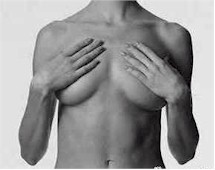|
|
||||||||||||||
|
Breast Cancer |
 
|
|||||||||||||
Breast cancer is a disease in which malignant (cancer) cells form in any of the tissues of the breast. This includes cell which originate from the lobes, ducts, connective tissue and fat. The lobes produce milk and the ducts connect the lobes to the nipple. Cancer can start in any area of breast or in some cases may have spread to the local lymph nodes or less commonly other parts of body in a form of metastases. Presenting symptoms: Many are now picked up by screening. Otherwise possible symptoms include a lump or swelling in the breast or armpit, dimpling of the skin, bloodstained discharge from the nipple, change in size, shape or skin colour of the breast (find out more) UK incidence: Breast cancer is the most common cancer in the UK. Nearly 44,000 women are diagnosed every year in the UK. Overall, one woman in nine will get breast cancer at some point in her life. Types: These are determined by examination down the microscope. Most often they are called invasive ductal, invasive lobular or inflammatory. Another relatively common pre-cancerous condition is called ductal carcinoma in situ (DCIS). Type can also refer to the grade (how aggressive the cells look). Risks factors: In most cases there are no predisposing risk factors but there is some evidence of associations with poor diet, smoking, alcohol, lack of exercise, long exposure to the pill or HRT hormones (find out more) Tests to determine a diagnosis and help decide on treatment options: breast examination, mammogram or ultrasound and biopsy (find out more) What determines treatment options & prognosis:
Treatment options: It may be classed as radical - aiming to cure or palliative - aiming to control symptoms. Options, often in combination include:
Coping strategies for the symptoms of breast cancer and side effects of treatment: Lifestyle strategies after breast cancer |
||||||||||||||




